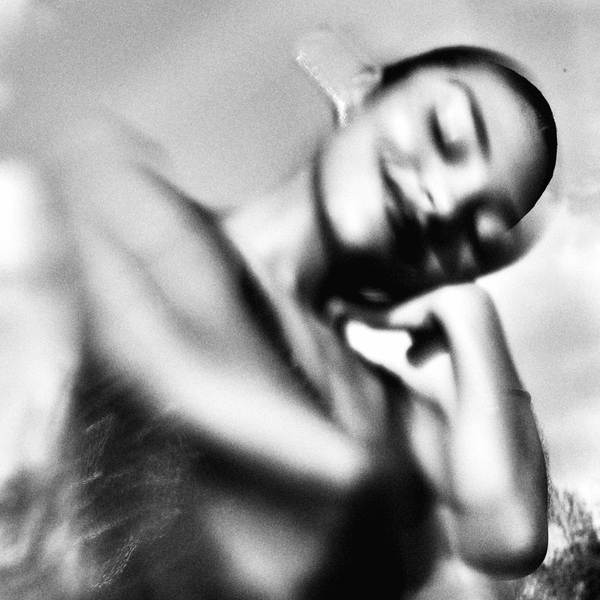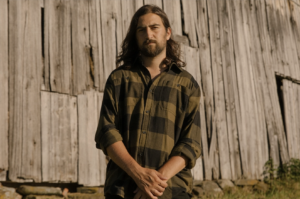If an aspiring artist stared at a blank canvas and wondered why no painting appeared, they would never become a painter. In all about love: new visions (1999), bell hooks, stylized in lowercase, imagines that alienated lovers share this same tragic passivity. The passive painter is tragic because of their low self-esteem, shying away from the spotlight at the cost of their potential. For the painter, low self-confidence disserves not only themselves but the world for lack of a masterpiece.
Both the passive painter and the alienated lover mistake the action of creative love for mere intent. In “The Art of Loving (Intro)” Olivia Dean sings that we “gotta throw some paint” because “that’s what bell [hooks] would say.” With this declaration, Olivia Dean opens her second album, a twelve-track gallery showcasing The Art of Loving (2025).
The Art of Loving fittingly places self-esteem at the center of Dean’s loving practice. Self-esteem encompasses the self-acceptance and assertiveness needed to live a responsible life. Self-neglect turns outwards, turning us into dangers to others. Dean respects herself, so she is honest about her flaws. In “Nice to Each Other,” she warns an unidentified lover that she will “probably crash [his] stupid car/and make his life a misery,” but at least they could be “nice to each other,” as the song’s title suggests.
Dean knows that she’s worth the wait because she’s just so very lovable. She freely flaunts that “anyone with a heart would agree” and that she is both a “Saturday night / and the rest of your life” in “So Easy (To Fall in Love).”
Dean also provocatively declares in “Baby Steps,” a song all about giving ourselves more grace as we learn to love, that “this house gon’ love itself!”. Her lyrics could be read as boastful, since such outward displays of confidence offend humility, but hooks would say that self-love and selfishness are not one and the same. Rather, hooks writes that “self-love is the foundation of our loving practice. Without it, our other efforts to love fail.” hooks and Dean alike know that unconditional love comes from a place of self-fulfillment.
Cultivating self-love is easier said than done, since we are left vulnerable from childhood. hooks astutely notes in all about love that “we are not born knowing how to love anyone, either ourselves or somebody else. However, we are born able to respond to care.” We default to treating ourselves and others as we have been treated, so critically examining what we have internalized is part of the art of loving.
Even the lonely painter must have learned their craft from someone.
hooks defines love as “the will to extend one’s self for the purpose of nurturing one’s own or another’s spiritual growth,” so love becomes a political ethic. If we embody love in what we do, it alone has to be sovereign over our actions. Dean harnesses this ethic in response to a lover who tries to keep her small, singing, “Who would do that to a friend? Let alone the one you love.” The love ethic compels us to see ourselves and others for our human dignity, not what we can produce for someone else.
For an album inspired by all about love, The Art of Loving is surprisingly distant from politics. Dean moves at her own pace, fostering self-love as a first step towards the clear communication she often yearns for, but the album seldom looks beyond Dean’s inner life. The Art of Loving offers no direct critique of structures that restrict uncalculated giving and graceful receiving. It is difficult to imagine a political song on such a tender album, but love itself has to be a political force in a hyper-individualistic and greedy world.
As much as The Art of Loving has charted a reflective journey for me, the album misses the bigger picture. Dean never actually defines the word “love” in The Art of Loving. Without a clear definition, the album loses all grounds to theorize.
The closest Dean comes to a definition of love is that she knows it when she sees it. Dean ends the album with “I’ve Seen It,” a song that defines love as she has experienced it. If Jill Scott stole Labi Siffre’s guitar and read Emily Dickinson’s classic poem “‘Hope’ is the thing with feathers” before composing, it would be as conversational, warm, and ephemeral as this song. The song is replete with love in unexpected places – “it” dances around the table with friends, gives weight to individual names like “Eleanor, Rosie, and Louise,” and embeds itself in joyful tears.
Everyone knows what “it” is, even though the word “love” is absent from the lyrics. I knew “it” from my first listen.
I have seen “it” in places both personal and political, and have found that neither is complete without the other. Two of my closest friends from Georgetown, Sophia Fish (SOH ’28) and Fatima Anjum (CAS ’28), have an on-the-nose sign in their apartment that says “love actually is all around.” I saw “it” when they rescued me from my house after I lost my Grandma Sheila to cancer this past May. I’ve seen “it” creak open as Sheila forced herself awake from her hospital bed to share one last moment, and every day when my dear friend Taylor Bielan was her patient care associate. Love can also be the thing with feathers, perching on bereaved hearts.
As much as The Art of Loving resonates with me, it misses how political love also orders my life. I’ve seen “it” break down barriers that could have kept me isolated from my Sheila. Sheila was Jewish, and she raised my father to be as well, but I grew up Catholic since my mother felt it was important for her children to share her faith. Still, I never had to wonder if Sheila felt that I detracted from her ability to have Jewish grandchildren. Sheila told me that my mother was loving, so she loved her.
I realized that as long as I did good, nothing else mattered to her.
Love has to be both a personal experience and a political ethic. Taking my cues from Dean in “I’ve Seen It,” Sheila’s love could lay idle in me “’til someone picks it up and sends it on.” Unlike the passive painter, I paint masterpieces because Sheila did.
Voice’s Choices: “Lady Lady,” “I’ve Seen It,” “Something Inbetween”






Great connections.